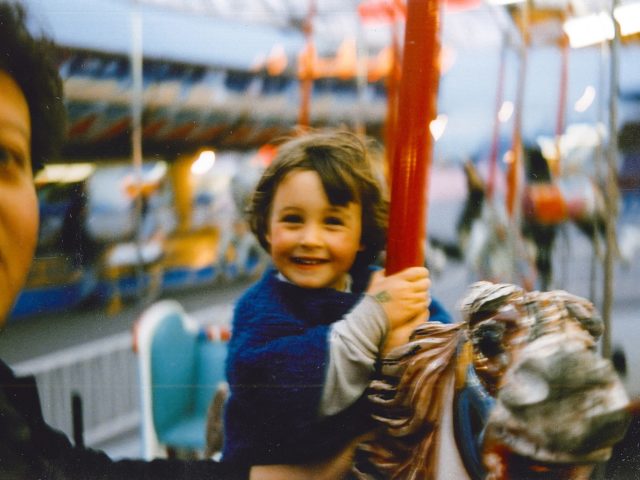This week, documentary film curator, Katy McGahan offered a list of short docs that inventively use archive material, which are all available to watch online. So we invite you to read this, and get inspired!
Ahead of our “New Reveries: The Power of Archive Now” filmmaking competition, we asked a range of archive specialists for their top tips on how on how to make a doc using archive film.
This week, documentary film curator, Katy McGahan offered a list of short docs that inventively use archive material, all available to watch online.
If you’d like to learn more, you can also check out our ‘5 tips for Archive Filmmaking’ project with Paul Bell (the archive producer for Amy and Senna).
Filmmakers have been appropriating archival material – film footage, photographs, documents and audio recordings – in myriad ways, from the Soviet compilation films of the 1920s, through potent usage in landmark films documenting historic events, satirical newsreel mash-ups, poetry films, diaristic films or found footage works.
The ever-innovative repurposing of archive footage has informed a fluidity of approach that continues to evolve the film medium into previously unimagined territories.
Some of the best feature length documentaries are built around archival footage so I’ve compiled an eclectic list of short films, most of which are available to view online in their entirety, that showcase some of the diverse ways in which filmmakers have reconstituted archive material to striking effect.
Lambeth Walk – Nazi Style / 1943 / 2 mins
The advent of video sharing websites has reinvigorated the mash-up video as a popular form of artistic and political expression to the extent that butchered news clips of the likes of Donald Trump and Boris Johnson are now commonplace.
The re-hash form lends itself to humour and parody and for this reason has been adopted by filmmakers seeking to convey a political message in a succinct and accessible manner.
The Ministry of Information’s film department deployed subversive methods to ridicule Hitler and his cohorts to great effect in mash-ups such as Lambeth Walk – Nazi Style (1941) and These are the Men (1943) , both of which draw on footage from Leni Riefenstahl’s Nazi propaganda film Triumph of the Will (1935). Lambeth Walk proved a ‘viral’ hit when it was screened across cinemas in Britain.
Watch These are the Men here
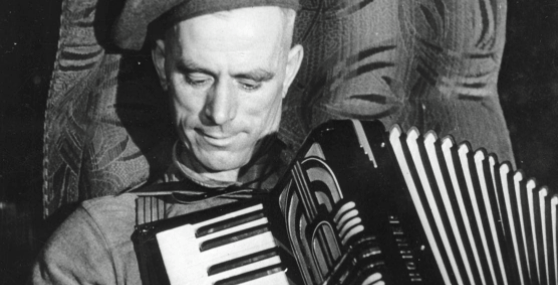
Listen to Britain / Dir. Humphrey Jennings and Stewart McAllister / 1942 / 20 mins
Working in the government sponsored sphere afforded filmmakers such as Humphrey Jennings and Stewart McAllister, who co-directed Listen to Britain, steady employment and the creative space and experience to find their cinematic ‘voice’.
Over a quarter of this film is made up of reused footage yet the seams are rendered invisible by deft and inspired editing. A string of vignettes of ordinary people going about their daily lives in the shadow of extreme adversity don’t just dissolve into each other – they are poetically juxtaposed with sound effects from one setting carried over to the next, deepening the relationship between each scene.
The film is a lyrical tribute to the endurance and determination of British people and helped seal Jennings’ reputation as Britain’s cinema war-poet.
Watch for free on BFI Player
Night and Fog / Dir. Alan Resnais / 1955 / 32 mins
This landmark documentary was made a decade after the Second World War Nazi concentration camps were liberated and served as a timely reflection on the Holocaust for contemporary audiences.
Night and Fog is a searing indictment but what sets it apart from lesser similarly themed films is its singular meditative tone. Lingering takes of abandoned concentration camps, captured in colour, are interspersed with black and white newsreel and allied army footage.
Instead the film keeps confronting us with the uncomfortable events of the past, forcing us to reflect deeply on what it means to be human and not consign the ugly truth about humanity’s chilling capacity for violence to memory.
Watch Night and Fog on Vimeo
See the Criterion Collection’s spotlight on Night and Fog here.
An American Time Capsule / Dir. Charles Braverman / 1968
If there’s one thing American filmmaker Charles Braverman can’t be accused of it is long-windedness. One of his earliest films is An American Time Capsule, an animation made up of archival still images that cumulatively encapsulate 200 years of American history in two and a half minutes.
The frenetic pace of the film is led by the pulsating soundtrack courtesy of drummer Sandy Nelson – the track is included on his album ‘Beat That #?!* Drum’.
Watch An American Time Capsule on the Internet Archive
Watch Charles Braverman’s short film World of 1968 on YouTube.
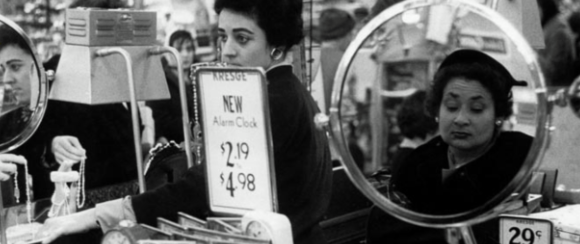
Nice, Very Nice / Dir. Arthur Lipsett / 1961 / 7 mins
Arthur Lipsett’s first film Nice, Very Nice began as a sound only experiment whereby Lipsett would rescue audio offcuts from the waste bin at the National Film Board of Canada where he worked and splice them together.
Only as an afterthought did he decide to add images – archival stills and photographs that he himself had taken in and around the streets of Montreal. The resulting film is a sensorial delight but it amounts to much more than a mere formal experiment.
Nice, Very Nice garnered an Academy Award nomination in 1962. After seeing the film Stanley Kubrick asked Lipsett to direct a trailer for his upcoming Dr Strangelove but Lipsett declined.
For more information on this film and Arthur Lipsett see Michael Baker’s excellent essay “From Dots-and-Loops to Cut-and-Paste Arthur Lipsett’s Very Nice, Very Nice”
Watch Nice, Very Nice on The Nation Film Board of Canada’s website here.
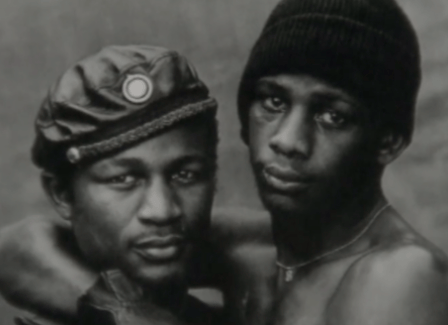
Tongues Untied / Dir. Marlon Troy Riggs / 1989 / 55 mins
Tongues Untied gives voice to young black gay, queer and trans people as they are forced to navigate the racism and homophobia that plagued their lives in 1980s America. While boldly tackling issues head on – and refreshingly from the inside out – the film is also a hymn to the vibrant culture and artistry of the marginalised communities it depicts.
Riggs records his own views and experiences and those of fellow African American men in his community and sets these personal testimonies alongside an array of archival footage, poetry by Essex Hemphill and others, and music that beautifully evokes the era.
The film broke ground in its authentic portrayal of a marginalised groups of people and for provoking dialogue across communities. Its distribution was helped along by a series of attempts to censor the film by some conservative quarters of the establishment on its release.
For more insight watch this 1992 UCLA interview with director Marlon Riggs, here.
Watch Tongues Untied on Kanopy.
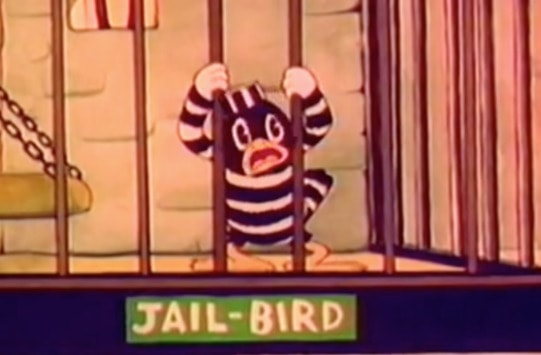
Bird Watching / Dir. Anne Hollowday / 2018 / 5 mins
Before the concept of Bird Watching was conceived filmmaker and photographer Anne Hollowday built up a vast audio archive comprising recorded conversations that she’d had with a wide range of people.
Hollowday’s original intention was to create a montage of footage of the streets of New York to accompany the audio. As it turned out her carefully curated and edited imagery of various bird species provides a strong visual metaphor and challenges sexist attitudes that still prevail. It’s satisfying to witness how the filmmaker ‘owns’ the age old putdown, ‘bird’.
Watch Bird Watching on Vimeo.
Read the Director’s Notes here.
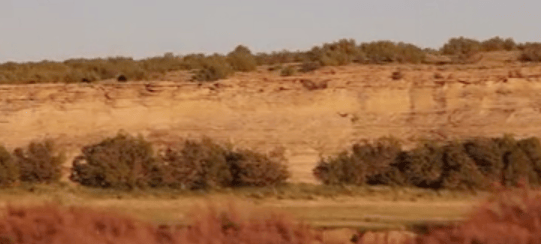
Ida Western Exile / Dir. Courtney Stephens / 2014 / 8 mins
In Courtney Stephens’ essayistic film, a range of disparate archival elements are assembled to interrogate the notion of isolation – archival footage of artist Georgia O’Keefe at Ghost Ranch in New Mexico; materials from the O’Keefe museum in Santa Fe; clips of Hong Kong commuter trains; and other footage sourced from YouTube.
In the opening shot artist Georgia O’Keefe cuts a stark, confident figure as she strides across the monumental New Mexico landscape, primed to take on the challenge of painting the forbidding mountain range that dwarfs her. Audio recordings of an interview with O’Keefe confirm that she is relishing her solitude.
As well as dealing with physical journeys the film navigates complex ideas around gender, fear and the omnipresence of violence. The superimposition of O’Keefe’s paintings on the vast, almost sci-fi New Mexico landscape injects a dreamlike otherworldliness.
Watch Ida Western Exile on Vimeo.
Read Courtney Stephen’s entry on desistfilm ‘Exposure Cinema’, here.
